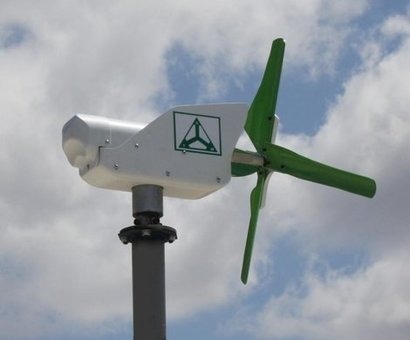
The DOE’s National Renewable Energy Lab (NREL) has released the first ever technical and economic analysis of the potential of distributed wind power in the US. This typically means smaller wind turbines installed at homes, farms and businesses, as well as at public facilities where they can help to reduce consumer electric bills. The key finding in the new study is that distributed wind installed at millions of locations nationwide has the technical potential to power the entire US electrical system.
Distributed wind power’s total addressable resource potential is comparable to wind farms and offshore wind, potentially supporting millions of systems and thousands of gigawatts of power production capacity. In aggregate terms, the resource potential for this sector “exceeds total U.S. electricity demand,” which comprised approximately 3,700 TWh of electricity in 2015. “Behind the meter” distributed wind turbines are technically feasible for a large portion of the US building stock, including “about 49.5 million buildings”.
“Solar has received tremendous federal and state support over the last three decades” said Jennifer Jenkins, Executive Director of the Distributed Wind Energy Association (DWEA). “This new DOE report shows that a more modest set of similar programs aimed at distributed wind could yield huge benefits. Particularly since this is ‘made-in-America’ equipment.”
Mike Bergey, President of DWEA, added that the report is timely because the Congress has the opportunity over the next few weeks to fix an omission in last year’s spending bill that provided a five-year extension of solar tax credits but did not do the same for small wind. Mr Bergey said he hoped the country won’t be giving tax credits for imported solar modules that aren’t available to small wind systems built in America, as the new report shows this would effectively throw away lots of US manufacturing jobs.
Major increases in electricity production (and corresponding rural economic development) from this sector are quite possible, especially with policies that have been successful with solar. Community or “locally owned” wind power is not assessed in this modeling, but if it were, it is believed to have “significant additional potential” not captured within the scope of the current analysis.
The Distributed Wind Energy Association is a collaborative group comprised of manufacturers, distributors, project developers, dealers, installers, and advocates, whose primary mission is to promote and foster all aspects of the American distributed wind energy industry. DWEA seeks to represent members and associates from all sectors with relevant interests pertaining to the distributed wind industry.
For additional information:
US Department of Energy (DOE) report

